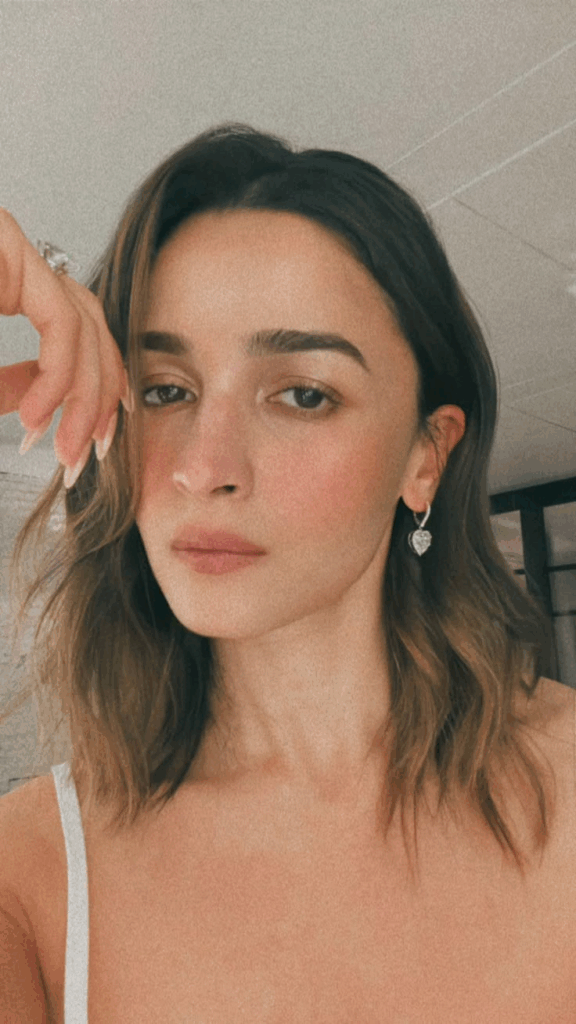Prompt discussion on accountability vs individual choice in a media-saturated culture.

In 2012, Alia Bhatt debuted in Student of the Year — and her entrance wasn’t just into Bollywood, but into mainstream conversations about beauty, body goals, and worth.
Before her big break, she underwent a dramatic physical transformation, reportedly losing over 15 kgs in under six months. That journey — highly publicized and celebrated — became a blueprint.
A dangerous one.
💬 “If Alia Can Do It, Why Can’t You?”
This one sentence — echoed in tabloids, friend groups, aunties’ gossip, and Instagram captions — says everything about the culture we live in.
A culture where:
- Thinness = success
- Weight loss = discipline
- Smaller = better
- Transformation = validation
And if you haven’t done the same?
You’re lazy. You’re not trying hard enough. You’re not worthy of that glow-up story arc.
📺 Media’s Role: Inspiration or Indoctrination?
Let’s be real: Alia Bhatt’s transformation wasn’t just personal. It was turned into a commercial.
Her before-and-after photos trended.
Her diet plan went viral.
Her gym routine became content — and suddenly, thousands of young girls felt like their bodies were problems to be fixed.
And who amplified that?
The media.
Headlines like:
- “How Alia got her bikini body in 3 months”
- “From chubby to chic: Alia’s glow-up decoded”
- “You can lose weight like Alia too!”
…turned her personal journey into a one-size-fits-all success story — with no trigger warnings, no mental health disclaimers, and no transparency about genetics, privilege, or long-term sustainability.
🧠 The Real Impact on Young South Asian Girls
Alia’s transformation wasn’t just a fitness trend — it became an expectation.
Suddenly, young girls were:
- Skipping meals to “look like Alia”
- Internalizing shame about puberty weight gain
- Believing they had to be a size zero to be loved, chosen, or even visible
And here’s the problem: No one asked if this was okay.
The focus was on the result — not the pressure, disordered habits, or obsession that followed.
🤳 Individual Choice vs. Media Accountability
Is it Alia’s fault that her transformation sparked body insecurity in millions?
No — not entirely.
But when celebrities benefit from publicizing their glow-up journeys, there is a level of responsibility.
Especially when:
- They’re role models to teens
- Their platforms reach millions
- Their transformation becomes the standard — not the exception
And the media? They have to do better than glamorizing extremes and ignoring the fallout.
🧩 So What Needs to Change?
1. More Transparency in Celebrity Fitness Stories
Let’s normalize saying:
- “I had professional trainers and chefs.”
- “I struggled mentally during this time.”
- “This is my story — not a rulebook.”
2. Responsible Reporting from South Asian Media
Stop sensationalizing body transformations like trophies.
Start asking:
- What message are we sending?
- Is this safe?
- Who might this harm?
3. Create More Diverse Beauty Narratives
We need female leads in every body type.
We need stories about girls who don’t shrink to fit in.
We need more than just the glow-up arc.
💭 Final Thoughts: Love Isn’t a Size
Alia Bhatt didn’t owe anyone an explanation for her transformation. But media outlets — and fans — turned it into a standard, not a story.
If a glow-up requires self-hate, starvation, or pressure to perform “pretty,” it’s not worth it.
Young South Asian girls deserve to know:
✨ They don’t need to shrink to be seen.
✨ They don’t have to earn love through weight loss.
✨ They are more than their before-and-after.
No Responses